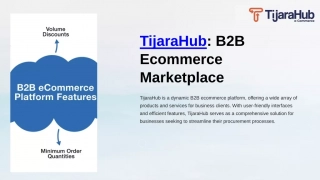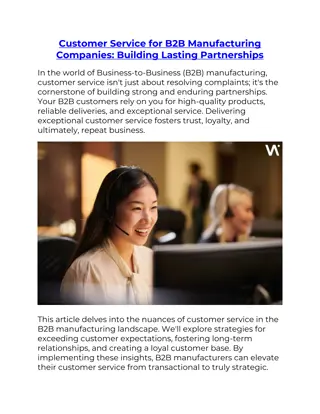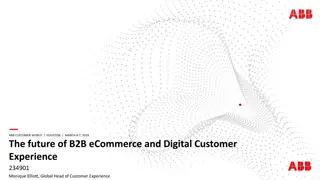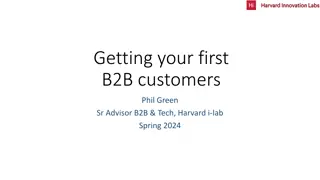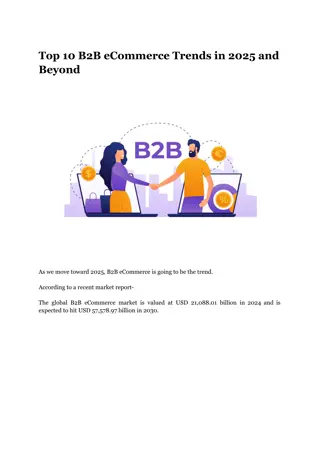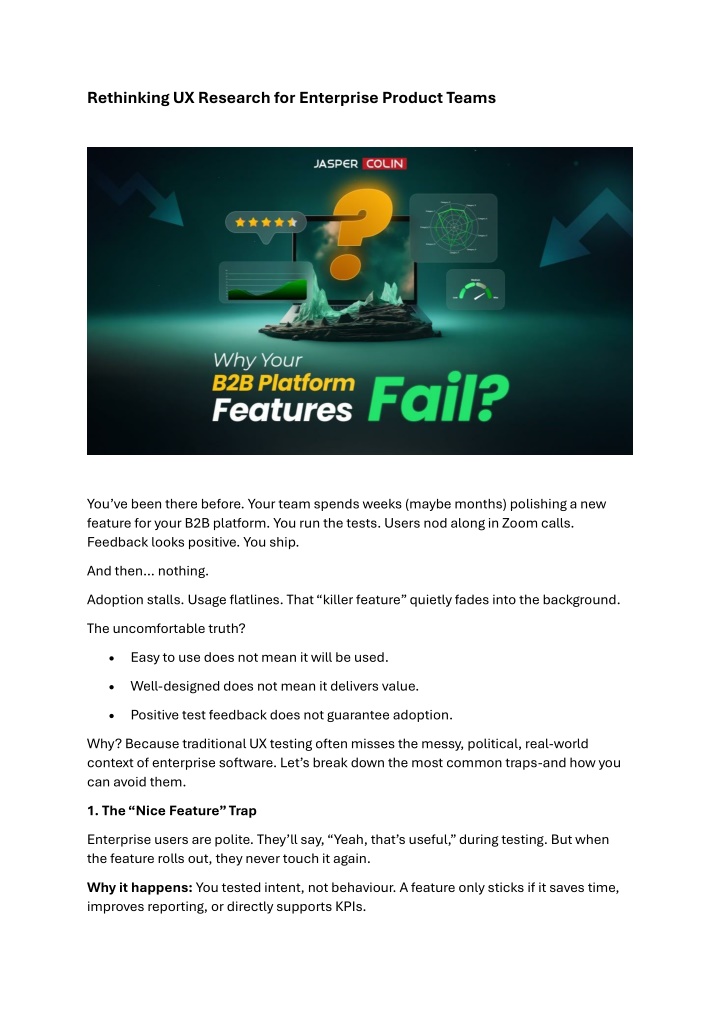
Why Your B2B Platform Features Fail (Even After “Good” UX Testing)
Discover why B2B features can fail despite u201cgoodu201d UX testingu2014and learn practical strategies to drive real enterprise adoption, not just usability.
Uploaded on | 2 Views
Download Presentation

Please find below an Image/Link to download the presentation.
The content on the website is provided AS IS for your information and personal use only. It may not be sold, licensed, or shared on other websites without obtaining consent from the author. If you encounter any issues during the download, it is possible that the publisher has removed the file from their server.
You are allowed to download the files provided on this website for personal or commercial use, subject to the condition that they are used lawfully. All files are the property of their respective owners.
The content on the website is provided AS IS for your information and personal use only. It may not be sold, licensed, or shared on other websites without obtaining consent from the author.
E N D
Presentation Transcript
Rethinking UX Research for Enterprise Product Teams You ve been there before. Your team spends weeks (maybe months) polishing a new feature for your B2B platform. You run the tests. Users nod along in Zoom calls. Feedback looks positive. You ship. And then nothing. Adoption stalls. Usage flatlines. That killer feature quietly fades into the background. The uncomfortable truth? Easy to use does not mean it will be used. Well-designed does not mean it delivers value. Positive test feedback does not guarantee adoption. Why? Because traditional UX testing often misses the messy, political, real-world context of enterprise software. Let s break down the most common traps-and how you can avoid them. 1. The Nice Feature Trap Enterprise users are polite. They ll say, Yeah, that s useful, during testing. But when the feature rolls out, they never touch it again. Why it happens: You tested intent, not behaviour. A feature only sticks if it saves time, improves reporting, or directly supports KPIs.
How to fix it: Watch what users actually do over time. Ask sharper questions: What would this replace? or Would you show this to your boss? 2. Testing in a Vacuum Most usability tests look like this: log in complete a task done. But real life? Users get interrupted. They switch tabs. They delegate. They wrestle with internal tools and approval chains. Result: Something that worked beautifully in a neat test session might collapse in the chaos of daily workflows. Better approach: Stress test features under messy scenarios. Track real-world usage with telemetry. Map how the feature connects with the tools people actually live in (spreadsheets, CRMs, email, Slack). 3. Forgetting Stakeholder Dynamics Here s the kicker: the person using the feature isn t always the one approving it-or paying for it. Consequence: Your feature wins over end users but dies in procurement, IT, or management reviews. Fix: Map the ecosystem: influencers, gatekeepers, buyers, and users. Test for value across all of them-not just the hands-on users. 4. Usability Isn t Enough Yes, people can use your feature. But will they? Adoption depends on motivation: does it help them hit KPIs, look good to their boss, or make their life easier? So instead of only asking: Can they use it? Also ask: Why would they bother? Bring in principles from behavioural economics-look for the incentives that drive action. 5. Feature Testing Isn t One-and-Done Your prototype may get the green light in testing. But what about three months later? That s when problems surface: unclear ownership, bad data, slow adoption. Pre-launch tests can t always predict that.
Smarter strategy: Re-test after onboarding. Track stickiness with both interviews and telemetry. Pay attention not just to who is using it, but who stopped-and why. 6. Shiny Innovation vs. Real Integration B2B users rarely ask for new. They want predictable, integrated, and reliable. A sleek UI won t matter if the feature doesn t work with their spreadsheets, dashboards, or approval workflows. Tip: Test interoperability just as much as usability. Don t underestimate the boring but critical things-like data exports, permissions, and integrations. How Jasper Colin Helps At Jasper Colin, we know the real-world pitfalls of B2B UX. Our research goes beyond does this test well? to uncover what truly drives adoption at scale. We blend: Stakeholder-aligned qualitative research (not just end-user tests) Usage analytics and telemetry to track behaviour Task-based testing inside real workflows Longitudinal studies to monitor adoption over time The goal: helping product and UX teams build features that don t just look good in tests- but actually get used. B2B UX Research | Jasper Colin
Usability Gets You in the Door- Adoption Keeps You There In B2B, success isn t measured by how easy a feature is to use-it s measured by how often it gets used, who adopts it, and what outcomes it enables. So, the next time you re planning UX research, ask yourself: Are we testing for usability, or for adoption? If you re ready to reframe your UX research strategy, let s talk.

